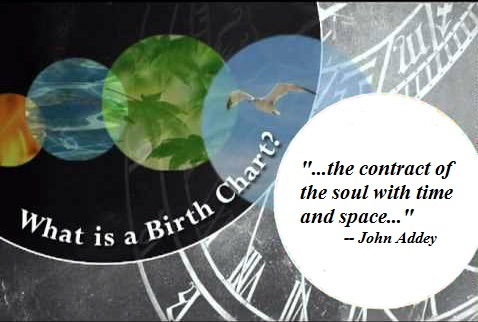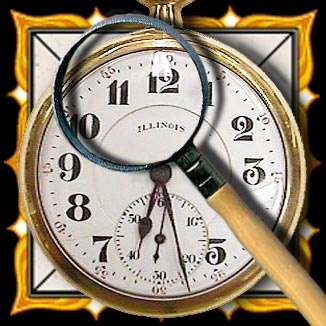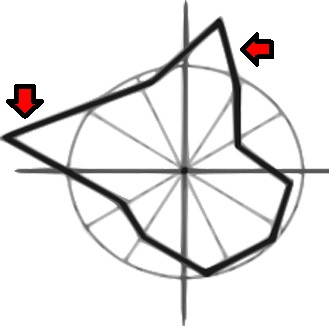By
John Townley, September 2012
For some
of us, if that’s a moral question, the answer might
well be yes. But if it’s an astrological question, the answer is
probably yes
for everybody, at least as
far as natal charts go. And that doesn’t just apply
to questionable birth times like those in Mom’s fading memory of
just one of
several childbirths, or a second-hand newspaper report. It applies to
virtually
every official hospital time on a birth certificate as well.
Why should that be? Does a birth
certificate lie? If a time
is accurate, that’s the chart and that’s that, isn’t
it? Actually, it’s not,
for a variety of reasons, which range from the state of mind and
practice of
the person who wrote down the time to much larger issues such as when
the
“birth” recorded in a natal horoscope actually takes place.
What
Is Birth?
Let’s start with the biggest
issue: what is birth? Most
astrologers across history define it not as any of the several stages
of a
baby’s travel through and exit from the mother’s vaginal
canal, but as the
moment of first breath, when the child actually begins a separate
existence, on
its own, independent from the mother. Yet, questions linger…what
about birth
trauma, especially in breech deliveries, or where the head is too big
and has
to be yanked out with forceps, sometimes with damage, well before the
first
breath. Don’t these count, or are they really pre-birth and
pre-horoscope? A
good question. And the umbilical cord is still functioning until
it’s cut,
often significantly after the first breath, meaning independence is not
complete. How about that? And, some would say (particularly
“right to life”
proponents) that the fetus has independent existence long before birth,
and
many abortion laws are based on a cutoff at the moment when a fetus is
considered “independently viable” despite still being
inside the mother.

What actually
constitutes birth? Not everyone agrees, much less on when it happens...
But, assuming the true birth moment is
first breath, noting
down that time accurately doesn’t always happen. One obvious
reason is that
unless there is a separate recording nurse whose main duty is to
observe and
take notes, everybody’s too busy with getting the baby out,
clear, and
functioning to notice and write down the time, so it’s guessed at
in retrospect
a few minutes later when all is well and the baby is comfortably
cradled in its
mother’s arms, which means it’s certainly not accurate, and
more likely late
than actual. Further, there is another point of view from the modern
doctor who
believes the baby is not actually born until it’s airway is
cleared, vital
signs checked, and out of all other dangers, at which time the
physician declares it born and notes down that
time, also clearly later than the
actual first breath.
So, when you combine the actuality
that a baby’s often
already alive and kicking before its first breath, one of the reasons
for the
pat on the behind to produce a cry (hey, I’m not breathing yet,
but I’m
here…oh, ouch!) with the probability that its breath was noted
late or not at
all, it’s likely that practically every birth time is later than
the reality of
the life beginning, and so has to be rectified slightly earlier, from a
minute
or two to perhaps twenty or more. In light of this, it’s not
surprising that
most astrologers will tell you that the long process of rectification
through
matching life events many years later most often yields a birth time in
precisely this window.


Did the recording
nurse get the time right? Or did the doctor decide, based on his definition of birth? Or
something else?
But is there any actual, statistical
evidence of this?
Actually, there appears to be. In Michelle Gaucquelin’s seminal
work, he
determines that significant planets in famous people’s horoscopes
in specific
sectors clustered around the horoscope’s angles. But those
“Gaucquelin sectors”
aren’t right on the angles as would be expected by traditional
astrological
belief, but rather significantly skewed into the next-door cadent house (12, 9, 6, and 3) which, if you bumped the
birth times back an average of 15-20 minutes, would put the sectors
right on the
angles, as would be expected. It could be that our very way of
recording birth
times has skewed the actual facts in an almost universal fashion.
And there’s a further reason to
question the Gaucquelin
sectors which reflect this phenomenon. In general practice, when
significant
events (other than recorded births) occur with exact timings, planets
tend to be
either
right on or just before reaching the angles, for pragmatic reasons
explained here
(see graph). Once a planet is past
an angle, the pressure of events falls off steeply, so actual
happenings tend
to be on the earlier side.
So for all these very mundane and
practical reasons, you had
better spend some time rectifying your chart, to get it right and the
corresponding birth time with it. But that can be a painful and
uncertain task,
especially since most astrologers compile traumatic events in the life
to see
if major afflictors were on the proposed rectified angles, and if
you’ve had a
relatively peaceful life, there’s not much to go on.


Gaucquelin sectors
(r) would exactly coincide with angles if actual births were regularly
earlier than official given times.
But there’s another, more
cumulative way to do it that lots
less painful, and my favorite. It’s probably best called rectification by
association, and simply requires that you have a
lot of charts of close friends and family and, if you’re short on
friends, a
sizeable set of horary charts will do quite nicely. It’s based on
the
observation in synastry that in the long term you attract people with
planets
on your planets and angles (or, rather, like gets shepherded together
with like
by general events), so that’s what you look for. Where their
degrees show up
significantly often and it’s not your Lights or other planets,
it’s your
angles, and there you go. Just watch out that it’s not your solar
and lunar Lagrange
points, the other often
mystery degrees in your chart.
The same goes for daily events, if you
just keep a daily log
of events, questions, and anything that concerns you. The variable
significant
events of the day (not the regular ones, like breakfast or quitting
time) will
tend to have the degrees of your planets and angles show up at a
significantly
higher rate than chance. And, if it’s not your Lights or
planetary degrees,
it’s your angles (or those sneaky Lagrange points). And be sure
to throw in the
axis of the Vertex
for either people
or events, it being the third angle, as it makes it faster and easier
to tally
things up. So whether it’s people or events, once you’ve
got a stack of them,
run them through the frequency analysis of almost any professional
astrology
software such as Matrix’s WinStar,
and you’ll see your rectified angles turn up like magic. The
larger your
sample, the clearer the picture.

No matter what your
official birth time, it probably needs a closer look, for a variety of
reasons.
So for most people, with at least some
reasonable estimate
of approximate birth time, this is not only the way to clear things up,
but an
explanation of how they got so unclear to begin with. If there is one
thing
astrology benefits from, it is getting back to simple first principles
– which
includes not only consistent astrological theory, but simple common
sense and
observations on the ways people and events organize themselves. The
hows and
whys of rectification is certainly a prime example.

